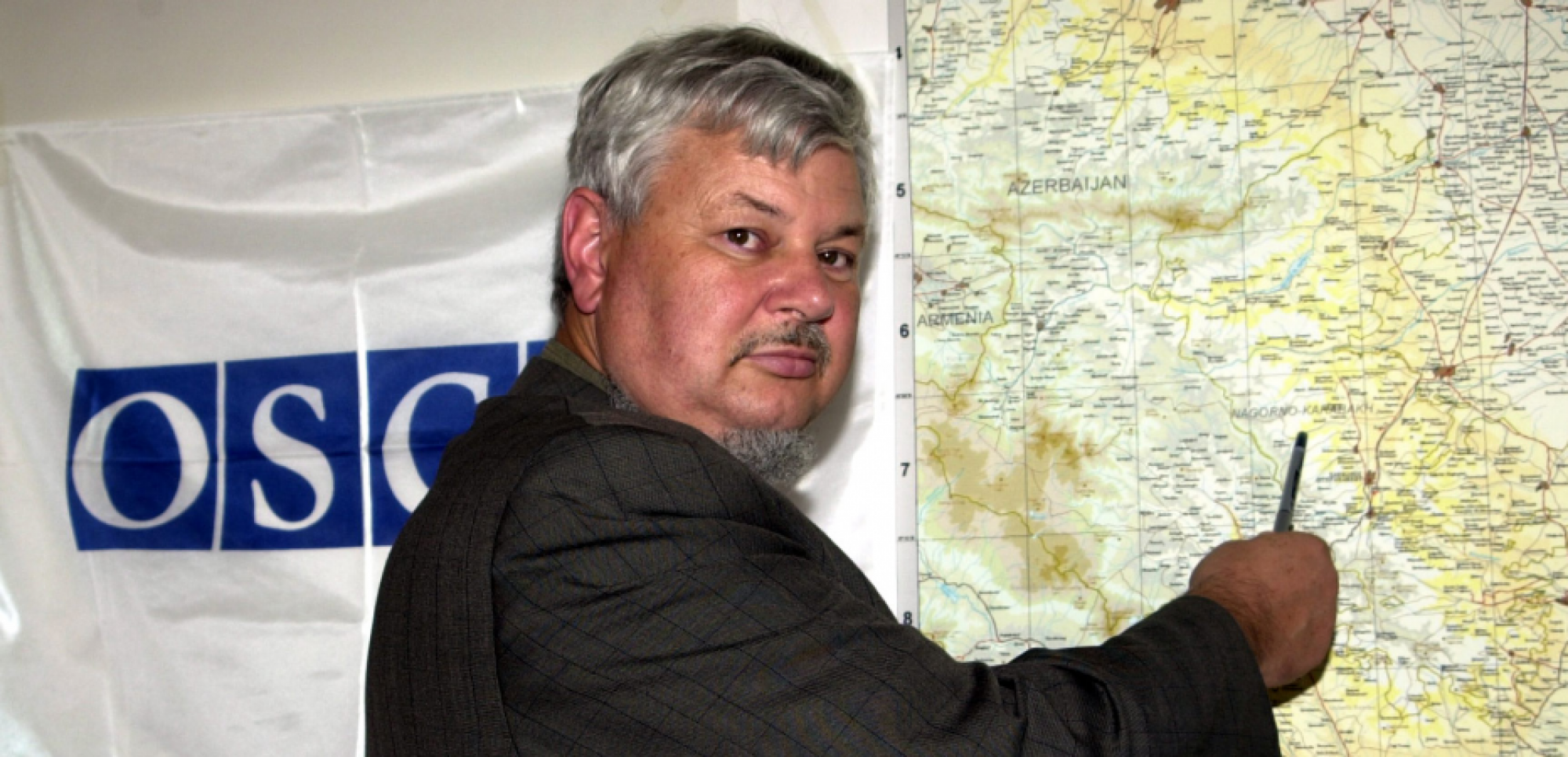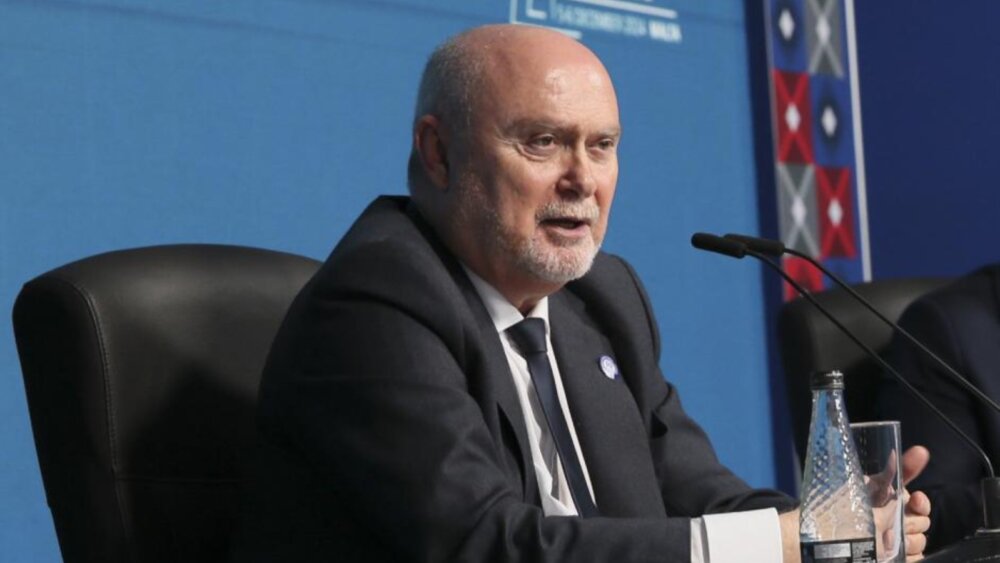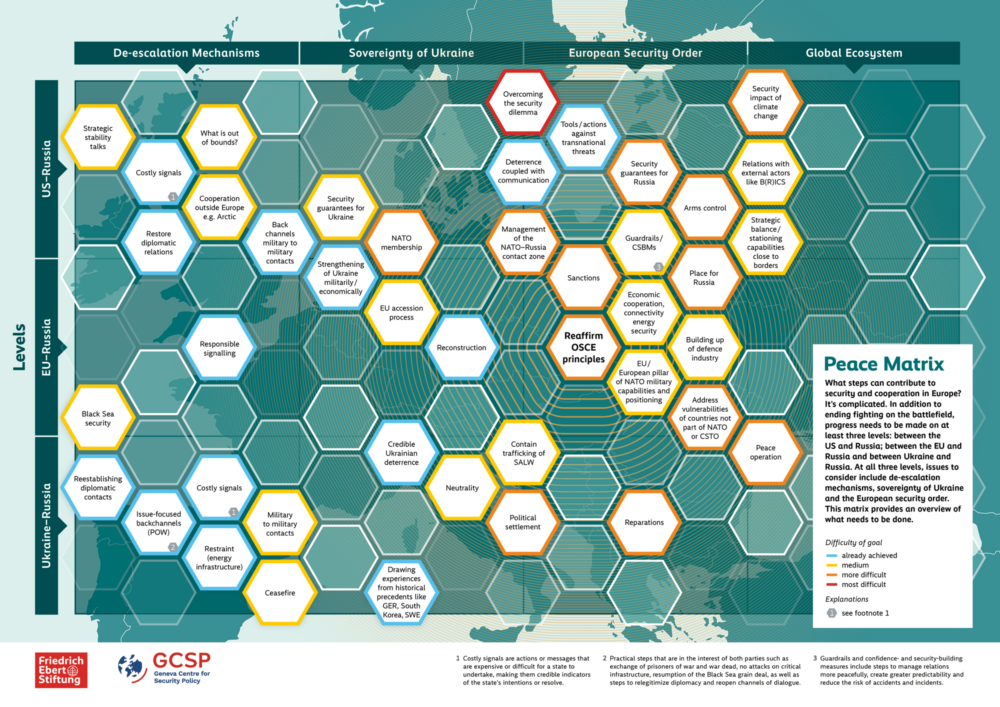Photo: OSCE/Alexander Nitzsche

Nagorno-Karabakh: A dangerous conflict that could spiral out of control
On 2 April, fighting broke out in the Nagorno-Karabakh region, killing well over a hundred people in the space of four days and reigniting a ‘frozen’ conflict that has been going on between Armenians and Azerbaijanis for almost three decades. This recent military escalation shows that there is a real risk for this ‘frozen’ conflict to remain ‘hot’ for a while. Another, more serious military confrontation may in fact be imminent. There is also a risk for Russia and Turkey to be drawn into a proxy war. Hence, a diplomatic push is needed to help diffuse tensions. The OSCE, under the leadership of its current German Chairmanship, should therefore come to the forefront with strong initiatives, together with the OSCE Minsk Group Co-Chairs.
Introduction
The mountainous region of Nagorno-Karabakh lies within Azerbaijan, but is predominantly populated by ethnic Armenians. A war took place between Armenia and Azerbaijan over that region from 1988 until 1994, which claimed 30,000 lives and displaced 1 million people from their homes, mostly Azeri residents of territories adjacent to Nagorno-Karabakh, which remain under the control of ethnic Armenian forces. While a ceasefire was brokered by Russia in 1994, tensions have persisted, including regular exchanges of fire along the Line of Contact between the opposing forces in and adjacent to Nagorno-Karabakh, and on the international border between Armenia and Azerbaijan. The recent fighting is by far the worst since the 1994 ceasefire.
Since 1994, the OSCE Minsk Group consisting on a permanent basis of eleven OSCE states, including the Troika of current, previous and next OSCE Chairmanships, and co-chaired since 1997 by Russia, the United States and France, has been leading international negotiations with the goal of finding a lasting and peaceful solution to the conflict.
However, so far, this goal has not been achieved.
Quite on the contrary, there is a real risk of further and more serious military confrontation. Why so?
Economic downturn in Azerbaijan
Azerbaijan, which has long profited from high oil and gas revenues that have enabled it to build up its military considerably, is currently experiencing an economic downturn due to sharply falling oil prices and a decline in the value of the Azerbaijani national currency, the manat. This situation has led to protests and unrest in Azerbaijan in January of this year. Mobilizing the population over Nagorno-Karabakh could thus help increase popular support for the regime during difficult economic times.
In addition, the stalemate in negotiations over Nagorno-Karabakh has led to a considerable amount of frustration in Baku. The recent military confrontation can therefore also be interpreted as a way for Baku to force Yerevan to the negotiating table. The last meeting of the presidents of Armenia and Azerbaijan took place in December 2015 in Bern, Switzerland. However, this meeting has not led to a breakthrough (similarly to all the other previous meetings between them).
This is mainly due to the fact that Baku and Yerevan have yet to agree on a basic set of principles. (Principles that have been mentioned in the past, notably those set out in Madrid in 2007, include the non-use of force, the right to self-determination, territorial integrity, as well as the determination of the status of Nagorno-Karabakh, the return of refugees, determination of a corridor linking Armenia and Nagorno-Karabakh, and international security guarantees that would include a peacekeeping mission).
Hence, some analysts say that the economic downturn in Azerbaijan, domestic instability as well as frustration over the stalemate in negotiations could lead Baku to conclude that another military offensive is the only way forward. Indeed, Armenian President Serzh Sargsyan was quoted by Bloomberg in an interview on 24 April as saying that war could break out “at any moment.”
Geopolitical interests
The situation is further exacerbated by the fact that a number of key players, who have broader geopolitical interests in the region, could be drawn into the conflict.
Some analysts say that Russia profits from instability in the South Caucasus region as it delivers arms to both, Armenia and Azerbaijan. Instability in the South Caucasus threatens oil and gas supplies from Azerbaijan to Europe. This in turn makes Moscow look like the better option for natural gas supplies to Europe.
In addition, Russia is competing with Turkey over influence in the region. Relations between Moscow and Ankara have deteriorated sharply since the shooting down of a Russian plane by Turkey along the Syrian-Turkish border last November.
Turkey has traditionally been an ally of Azerbaijan with close cultural and linguistic ties. In addition, Turkey and Azerbaijan have strong economic ties, the Baku-Tbilisi-Ceyhan pipeline being a case in point. Furthermore, Ankara has always been a staunch supporter of the territorial integrity of Azerbaijan. Turkey’s prime minister, Ahmet Davutoğlu stressed on 5 April: “Let the whole world know that Turkey will be shoulder to shoulder with Azerbaijan until the end of time. We will continue supporting Azerbaijan on all issues, including Nagorno-Karabakh, until all its lands are liberated.”
By contrast, Russia has been a guarantor of Armenia’s military security since the breakup of the Soviet Union and operates a military base in that country. Russia has also increased its military spending to Armenia this year. In addition, Moscow and Yerevan have signed an agreement over a joint air defense system in December 2015.
Hence, further fighting between Azerbaijan and Armenia over Nagorno-Karabakh could draw Turkey and Russia into a proxy war. However, some analysts say that the increased Russian military presence in Armenia is mainly a way for Moscow to deter NATO and question whether Moscow would really come to the help of Armenia over Nagorno-Karabakh. In fact, Russia has military alliance obligations to Armenia via the Collective Security Treaty Organization (CSTO), which only apply to the territory of the Republic of Armenia but not to Nagorno-Karabakh.
Another player that should not be forgotten is Iran. Iran’s main interest in the region is to develop transportation corridors as it borders both Azerbaijan and Armenia. Especially with the recent lifting of economic sanctions, Tehran is looking for new economic opportunities and to get increased access to global markets.
Measures to be taken by the international community
Hence, in light of the possibility for a renewed and more serious military confrontation between Armenians and Azerbaijanis and of the risk that this could draw other players into the conflict, a strong diplomatic push by the international community, and especially the OSCE, is needed.
However, the halt to the most recent military confrontation was not brokered by the OSCE Minsk Group Co-Chairs but at talks between military chiefs from Armenia and Azerbaijan in Moscow on 5 April. This again demonstrates the strong influence that Moscow has over the parties: on the one hand Moscow sells arms to both sides, and on the other hand it helps to broker a truce.
That said the Co-Chairs of the Minsk Group as well as all Minsk Group countries did issue strong statements in reaction to the recent hostilities, condemning the violence and calling for a negotiated solution (see here and here). The German OSCE Chairmanship also convened a Special Meeting of the OSCE Permanent Council to discuss the situation. The Minsk Group Co-Chairs also travelled to the region from 6 to 9 April and held talks in Baku, Yerevan and Nagorno-Karabakh. However, what is missing is a strong initiative and a diplomatic push by the OSCE aimed at preventing further military confrontation in the near future and breaking the stalemate which has persisted for over two decades.
Concretely, what can be done?
Firstly, Germany, which is currently chairing the OSCE and is also part of the OSCE Minsk Group in its own right, should take the initiative and invite the Foreign Ministers of Armenia and Azerbaijan for talks to Berlin, together with the Co-Chairs of the Minsk Group. It is necessary to help the parties reduce tensions and regain trust and thus lower the possibility of another military confrontation. It is important to show leadership. Although the Minsk Group Co-Chairs are mandated to conduct negotiations to end the conflict, this does not exclude the possibility for the German OSCE Chairmanship to undertake a diplomatic initiative. In fact, it may even be useful for Austria (as incoming OSCE Chair in 2017) to join such efforts.
Secondly, out-of-the box thinking on the activities and composition of the OSCE Minsk Group (Belarus, Germany, Italy, Sweden, Finland, Turkey, Armenia and Azerbaijan, as well as the OSCE Troika) and the Co-Chairs (USA, Russia, France) should be initiated. Suggestions could be worked out by Track II initiatives (that is non-governmental initiatives, for example by the OSCE Network of Think Tanks). Fresh thinking about this is necessary in order to avoid the impression that the OSCE Minsk Group is contributing to, rather than helping to break the stalemate.
The three Co-Chairs of the Minsk Group have been criticized in the past, mainly because there is an impression that they are unable to act as neutral and honest brokers. This is due to the fact that many believe that Russia is not really interested in a lasting, peaceful settlement (although it is also not interested in a full-blown war) and because all three countries – the US, Russia and France – harbor large Armenian Diasporas.
One way of overcoming this would be to allow certain Minsk Group countries to become more active (for example Germany and Austria). Or how about adding a new member to the Minsk Group, for example Switzerland, which has vast mediation experience? (The issue of an increased Swiss role has been discussed before, see for example here). Such new initiatives should of course not undermine the work of the Co-Chairs of the Minsk Group. Especially Russia will always have to remain a strong player in any negotiation format. But it might be useful to start thinking about the advantages (and disadvantages) of engaging other states that may be considered more neutral by all sides, and allow them a mediating role.
Thirdly, more use should be made of the Personal Representative of the OSCE Chairmanship, Ambassador Andrzej Kasprzyk of Poland. He has been in that post for almost 20 years and heads a small team of just six international staff. Ambassador Kasprzyk and his team have established an excellent network of contacts in the region and have also done very important work in the aftermath of the recent military confrontation. In fact, the team of the Ambassador Kasprzyk, together with the International Committee of the Red Cross, facilitated the retrieval of bodies of servicemen killed during the recent fighting. Hence, with the help of Ambassador Kasprzyk and his team, more effort should go into confidence-building measures and people-to-people contacts on the ground in the coming months.
In any case, some form of confidence-building should be initiated, especially against the backdrop of the recent military confrontation. Hence, finally, serious work should go into establishing a mechanism to investigate ceasefire violations along the Line of Contact. German Foreign Minister Steinmeier has voiced his support for such a mechanism in January when giving his inaugural speech to the OSCE Permanent Council.
All of these measures are necessary in order to avoid another, more serious military confrontation. Despite the influence that Russia has in the region and also despite its strong diplomatic engagement, there is no guarantee that Moscow can stop another war quickly enough before it drags in more players and thus spirals out of control.



Comments
* Your email address will not be published